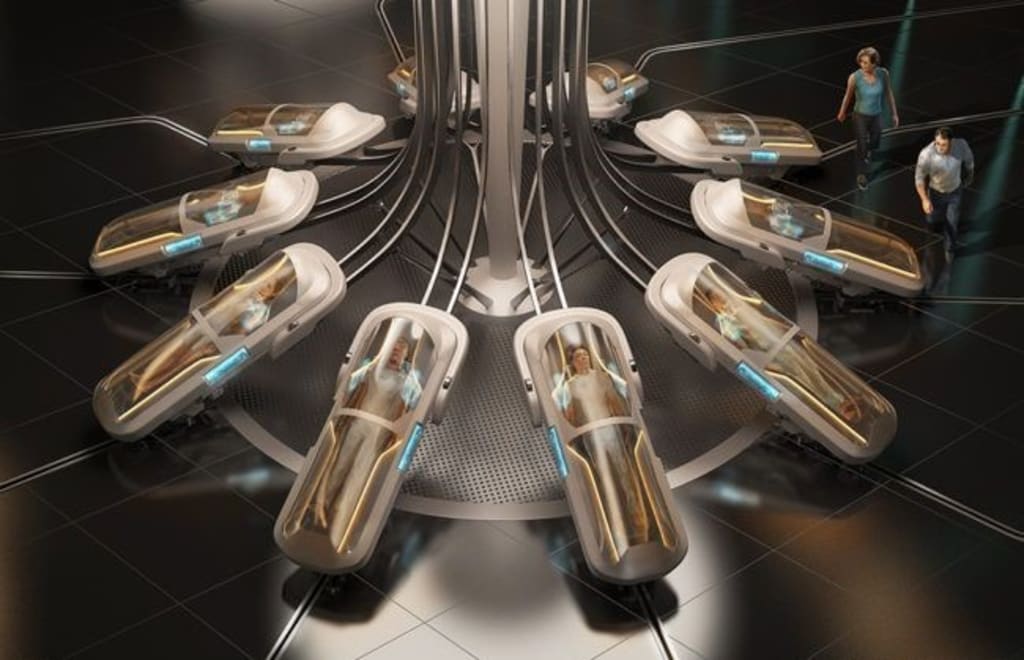THE CENTURY-LONG SLEEP
Slumbering Through the Centuries: Humanity's 1000-Year Siesta and Awakening

Imagine a scenario where the entire global population has collectively chosen to embark on a 1,000-year-long slumber. Every person on Earth retreats to specially designed underground bunkers, settling into their comfortable beds. The last person awake dutifully sets the alarm clock for a millennium into the future before closing their eyes. Millions of robotic helpers are assigned to stay close to their slumbering masters, monitoring their condition and observing the fate of our planet. In this arrangement, no one is left behind to safeguard our civilization, and our homes, offices, and cities are surrendered to the whims of nature.
Within the first day of this grand slumber, power plants across the globe begin to shut down, plunging cities into darkness. Gone are the days of television and internet, and the only remaining beacon of light is Las Vegas, powered by a hydroelectric plant that can operate independently for an extended period. However, there are no revelers to enjoy the city's neon glow; it illuminates empty streets.
A week into this global siesta, raccoons start to venture into people's vacant homes, scavenging for food in the absence of human activity. With no one to deter them, they practically take over households, assuming the role of unlikely domestic rulers. Thankfully, all the beloved pets have accompanied their owners into the underground sanctuaries, sparing us from imagining the plight of domestic animals left to fend for themselves.
In the absence of electricity, refrigerators, supermarkets, and restaurants cease to function, and food and groceries soon spoil. The resulting stench attracts a variety of scavengers and pests. One month into the great slumber, nature begins its relentless encroachment into major cities. This includes not just the proliferation of plants but also the liberation of lions from city zoos, no longer confined by electrified enclosures. These urban jungles now belong to them as they roam the streets in search of prey.
A year passes, and without human intervention, the world's ports descend into chaos. Mooring ropes deteriorate, causing massive cargo ships to drift aimlessly, colliding with each other and even bridges before sinking. Rats, former residents of cruise ships, now feast on leftover supplies, engaging in skirmishes with seagulls over precious morsels.
Five years later, our cities have undergone a dramatic transformation. Vines and ivy have enveloped buildings, while other plants have converted concrete streets into lush gardens. The ceaseless cacophony of car horns and the constant bombardment of advertisements on Times Square have been replaced by birdsong and the gentle rustling of the wind. Las Vegas, once a glowing oasis, has succumbed to darkness.
Typically, astronauts are responsible for maintaining and adjusting the International Space Station's orbit. In this scenario, however, they slumber on Earth alongside everyone else. Consequently, the International Space Station eventually succumbs to Earth's gravitational pull, re-entering the atmosphere and plummeting to the surface.
Ten years into this extraordinary slumber, humanity remains just 10% of the way through their millennium-long nap. Yet, the world already bears the appearance of an abandoned civilization from centuries past. Erosion, combined with sporadic earthquakes, ravages some of our most remarkable achievements. Iconic structures like the Golden Gate Bridge, the Brooklyn Bridge, Big Ben, and the Burj Khalifa become ruins.
Even priceless works of art, like the Mona Lisa, fall victim to microscopic bacteria that consume the timeless paintings. Insects later join the microbial feast, infiltrating protective glass encasements. At this point, nearly a century has elapsed since the world fell into its extended slumber.
Microscopic bacteria emerge as the new custodians of art, gradually eroding away the masterpieces. The once-gleaming monuments of human achievement, such as the Golden Gate Bridge and the Burj Khalifa, now lie in ruins.
After a century, our cities are scarcely recognizable, reduced to green-draped relics. Most structures are indistinguishable from heaps of concrete debris. Astonishingly, some ancient constructions, including the Pyramids of Giza and the Great Wall of China, remain intact. They stand as enduring testaments to human craftsmanship.
Remarkably, even the lunar and Mars rovers continue to exist, unaffected by corrosion, serving as the only relics of our bygone civilization. These resilient machines may persist for millions of years, offering silent testimony to our presence.
Finally, the alarm clock sounds, marking the end of this 1,000-year-long slumber. People awaken, stretching and emerging from their bunkers to witness the altered world. Their subterranean sanctuaries have preserved the perfect climate and a wealth of knowledge and technology, providing them with the means to rebuild their civilization. However, they are left with the daunting task of reconstituting a world that has evolved without human influence.
The question remains: Why did humanity embark on this millennia-long hibernation in the first place? The answer lies in our collective decision to allow the planet to rejuvenate. During our extended slumber, the atmosphere, oceans, wildlife, and ecosystems have had the opportunity to heal and recover. Wild animal populations have rebounded, and much of our plastic waste has decomposed. Yet, toxic waste remains buried throughout the world, a reminder of our past actions.
As humans reawaken, they are presented with a second chance to shape the world positively. With the knowledge and technology preserved in their bunkers, they can make choices that prioritize the health of the planet and its inhabitants.
About the Creator
Jeremiah “Jeremy” SEAL
"Passionate storyteller 📖 | Finding my voice one word at a time 🎤 | Exploring life's adventures and sharing them with you 🌟 | #VocalMedia"






Comments (1)
Great story! ❤️